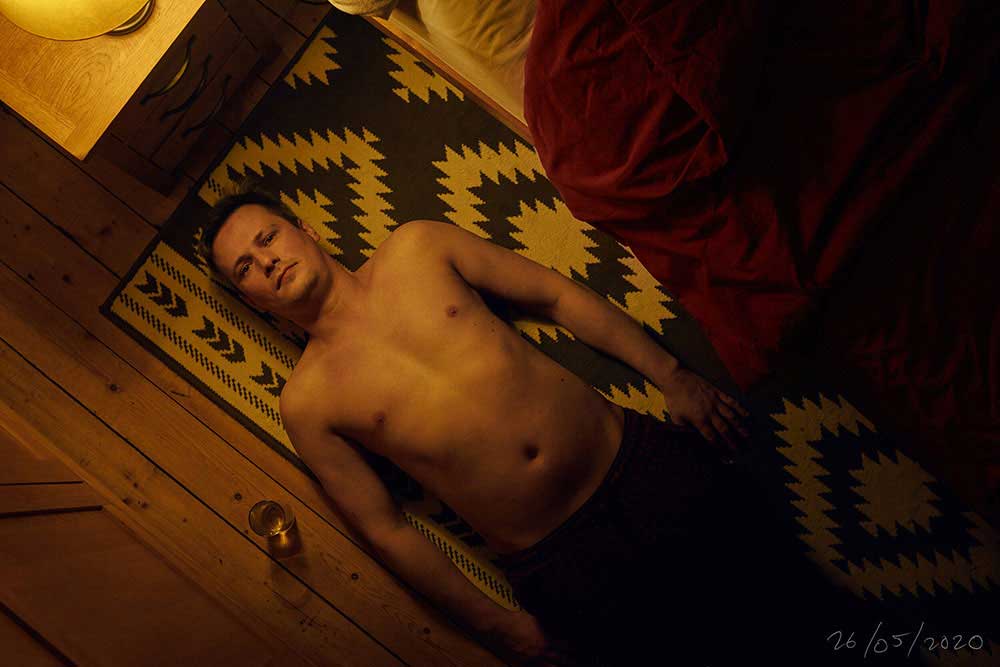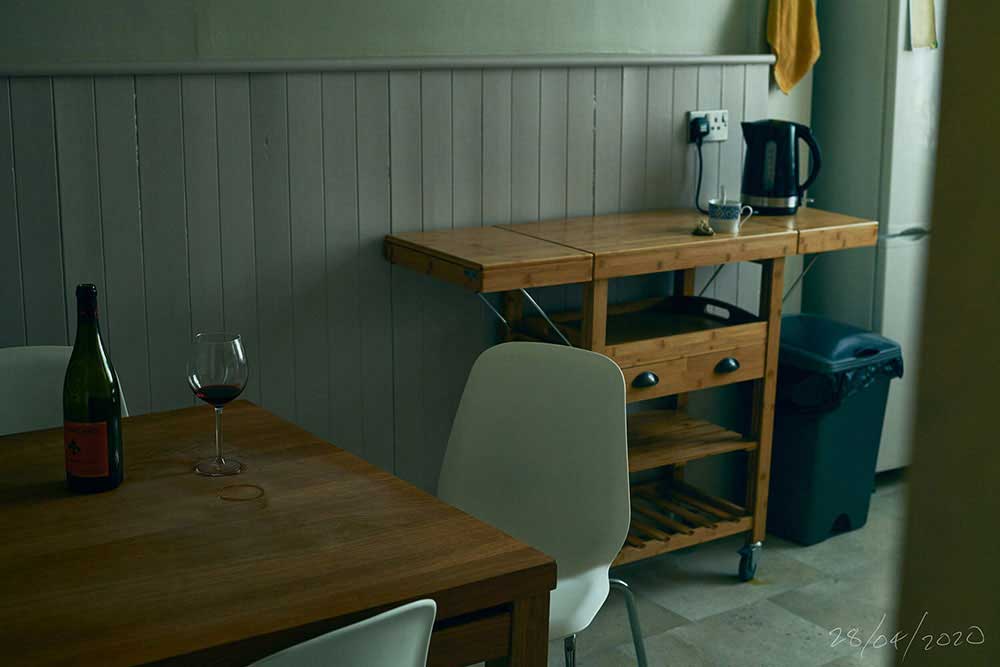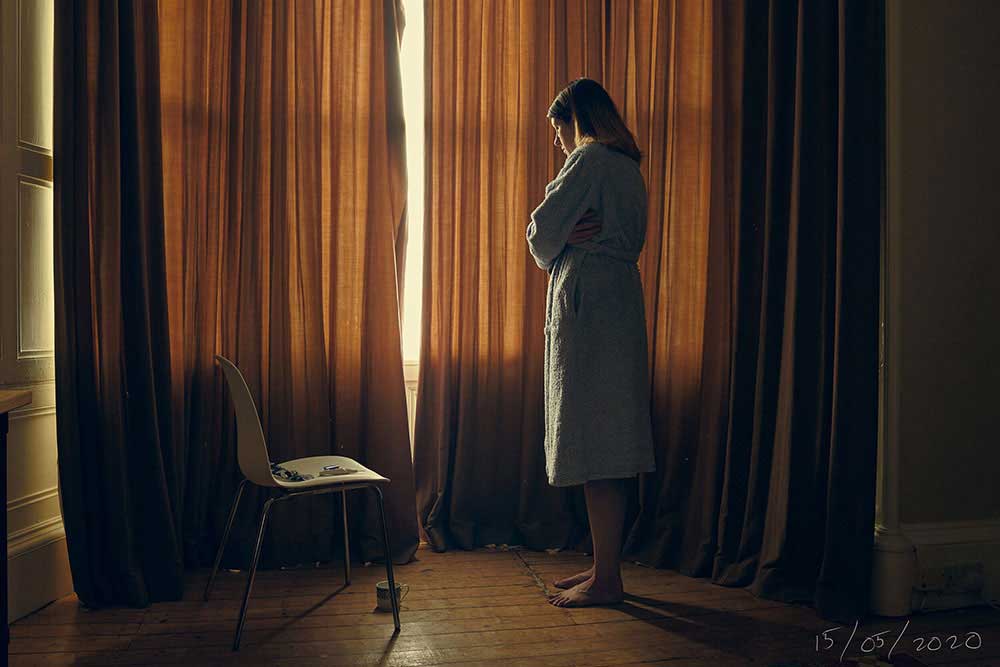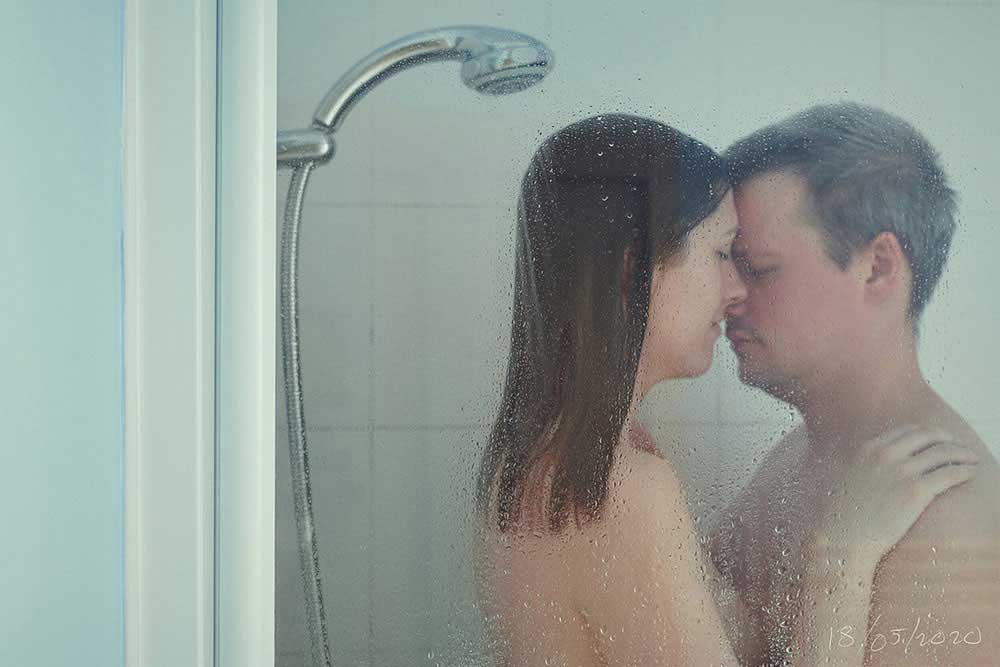Looking back over a year of the global pandemic, a recurring issue that I hear from almost everyone around me has been the debilitating effects of long-term anxiety and stress.
This crippling sense of worry, brought about by sustained periods of social isolation, can affect us all in so many different ways. This is especially true for creatives, for whom so often our sense of self-worth is intrinsically linked to our perception of the quality and quantity of our current output. Managing daily stress, anxiety and performance nerves has always been one of the biggest challenges of any full-time actor or performer, and as an ex-professional musician this is a topic very close to my own heart.
I continue to find parallels between the nervousness and stresses that I experienced in the lead up to a concert or musical recital, and the very similar pre-shoot anxiety I feel as a professional photographer. I often use many of the same stress management strategies to help cope when working under this kind of emotional and professional pressure.
After many months of unemployment during COVID-19, I found that I had developed a sustained sense of anxiety that was making even the most basic of tasks feel twice as hard. I recently shot a very successful high-profile editorial commission for a prestigious national magazine here in the UK – the first really rewarding commission in over 6 months – and the post-COVID anxiety I experienced in the days leading up to the shoot reminded me of how debilitating these pressures can be. In many ways creating beautiful images is often the easiest part of our role as image makers, and so many young careers have been broken by the pressure and anxiety that the job demands.
I hope that I can share some of my own suggestions, thoughts and coping mechanisms to help you manage your own professional mental health in these difficult and uncertain times.
Planning!
I think the single piece of valuable advice I can give to any young photographer or filmmaker who finds themselves struggling with nerves and anxiety is to never underestimate the benefits of forward planning. The famous American general, statesman and president, Dwight D. Eisenhower is quoted to have said:
“In preparing for battle, I have always found that plans are useless, but planning is indispensable.”
What Eisenhower is effectively saying, at least for us as photographers or filmmakers, is that real creative freedom can only come when we are in control of our craft, for only then are we able to rip up the original plan and react to the needs of the scene playing out in front of our lens. This is especially important for our own mental health, as with forward planning comes security and reassurance: we can feel safe in the knowledge that we have done all we can to be as prepared as possible for any given creative challenge.
Turning to the shoot that I mentioned above, the first part of this was to understand the requirements of the brief, discussing these with the editor of the magazine to make sure that I had as full an understanding as I possibly could. Any shoot can seem daunting at first, especially if the stakes are high and the work is for a respected client or publication; but with a knowledge of the brief or a clear sense of our own creative vision if it is self-directed work, then the safer and more prepared we can feel when the time comes to shoot.
Pre-Visualisation
Pre-visualisation is a concept that I often talk about, as it is possibly one of the most critical elements in the process of creating meaningful and engaging imagery. As photographers it is vital that we can see clearly in our mind’s eye the images that we want to capture, so that we are able to recreate these scenes in front of our lens. The more experienced we are in our craft and the deeper our knowledge of lighting and technique, the quicker and more fluid this process becomes.
After discussions with the magazine and a sound knowledge of who and what I was shooting, the next stage was to scout out the location. In this example we were creating portraits in a famous rock music venue. I wanted to pre-visualise all the possible spots that would lend themselves to both a beautiful composition as well as an engaging narrative, making sure that I had an advanced knowledge of any difficult lighting conditions that I was sure to encounter. I wasn’t able to visit the venue in person on this occasion, but a thorough internet search pulled up lots of images, allowing me to perform my own virtual location scouting!
With this in mind, I turned to my own creative exploration having selected two possible areas: an intimate dressing room setting backstage along with a cool, cinematically-inspired image on the main staircase. I began by preparing a mood-board of inspirational imagery that would form the starting point for my own images, focusing on light, colour, and texture along with possible posing and framing of the subjects. From there I was able to make essential decisions on the equipment that I knew I would need to hire, as well as determine an approximate amount of time that it might take to achieve these different lighting setups.
The main point to remember here is that it is only through thorough research and planning that we are ever able to manage and control our nerves and anxiety: we are free to experiment only when we have undertaken the necessary steps to shape our ideas and creative vision.
Basic Preparation
Another key stage, and possibly even an extension of the process discussed above, is to be prepared! On a very basic level this of course means making sure that your equipment is in good working order and that all the batteries are charged, but it more importantly means making valuable preparations for any possible situation that can (and often does!) occur.
An example that I continue to experience as an assistant working with other well-known photographers is poor cables and faulty electronics. The amount of time that can be saved by not having to wrestle with faulty equipment is time that should be spent being creative: experimenting with lighting and composition, and engaging directly with your subject. Returning to issues of anxiety and worry for a moment, this is one of the easiest ways to remain calm and in control, safe in the knowledge that you have enough batteries, backup cables, spares, stands, etc. to allow you to create the best possible images you can.
Where time and budget allow, if you don’t own all of the necessary equipment then rental is another great option for hardware. For the shoot that I spoke of before, I didn’t have the money to own all the lighting equipment that I knew I would need, but I was able to rent the equipment to make sure that I had the right tools for the job. For a paid shoot then these costs can and should be passed on to the client.
The last important element of your pre-shoot preparation and your mental health toolkit is the humble checklist; never underestimate the power of making lists and notes! This is one of the single best coping mechanisms that I know of, and one that I always employ whenever I start to feel anxious and worried in the days running up to an important shoot. Whether these lists are typed up formally and shared with your crew the day before the shoot, or simply stored in your own head, find yourself a quiet moment to run through each and every step of the production. Take the time to reassure yourself that everything is under control: that you have everything and everyone you need, and each piece of kit is exactly where it should be, with nothing left out or forgotten!
Staying Calm on Set
On the day of the shoot itself, tensions often run high, and our own internal nerves and anxiety can easily become one of the biggest obstacles that we encounter. With time and experience, however, there are simple ways to control and manage these fears. As we become more confident in our own ability, the easier it is to recognise this process and take the appropriate steps to manage our mental health on set.
The first and easiest way to control our anxiety is to give ourselves plenty of time. Returning to the shoot that I mentioned earlier, our talent wasn’t booked until 1:30pm in the afternoon, but I made sure that myself and my assistant were at the venue for 10am to give us plenty of time to scout out the location, set up both of our two images, and still have about a 45-minute break for lunch and coffee! Every shoot is different and having time is often a luxury, but always take more time than you think you actually need to stay calm, focused and in control. For example, the drive to the location that I spoke of previously is only 50 minutes door-to-door, but we left around an hour and a half to make sure that we wouldn’t be caught in traffic as we entered the city.
The second piece of valuable advice that I can offer when coping with stress and nerves on set is to try to always remain open and flexible in your thinking. The craft of photography and video is all about creative problem solving, and more often than not some ideas just simply will not work! It is completely normal to arrive on location and discover that the lighting isn’t quite right, and the angle of the camera just doesn’t work for that amazing idea you had. The key to coping under pressure in this situation is to work carefully and systematically, solving one small problem at a time.
Returning to the magazine shoot, our second setup of the day was actually much more difficult than I first anticipated, and I quickly discovered that it would need a lot more lighting than I had first imagined when studying the location images. The lighting design we used at first simply wasn’t looking good: it didn’t feel natural, and you could tell just by looking at the image on screen that we had lit the scene artificially. I stood back, took a deep breath and said to myself: what is wrong, what isn’t working? At the same time, what is good, what does work? And after weighing it all up: what do we need to fix it?
This type of critical thinking is one of the best ways to stay calm on set: breaking down complicated and stressful problems into smaller, and more bite-sized pieces. In our particular example, the solution meant softening our key-light with a different type of modifier (an octa-box) to control the spill, achieving a more realistic look that blended well with our subject and background. By using this type of simple mental checklist we can break down a complex technical challenge into a series of basic questions: what’s wrong with the light? Is it too hard? Too soft? Is it the direction of light, the colour of the light, or the quality of the light? It may in the end be a combination of all three of these, but by tackling one problem at a time, it is much easier to find our own creative solution.
If it still isn’t working though, never be afraid to change your plan! Try a different angle or a different part of the room, try a different light or a different type of modifier: you have already given yourself plenty of time, so don’t be afraid to make use of it when you need it.
Managing Mental Health as a Contemporary Creative
Whilst the solutions described so far are possibly best applied when preparing for a specific shoot or creative project, there are also a number of ways to apply these very same principles on a daily basis in our careers as photographers and filmmakers. Being successful in the creative industries is a very challenging and difficult path, and it is essential that we manage our expectations of just how long that process might take. In the wake of the global pandemic, sadly this has never been more true, and it is important to realise that there is no easy way, no quick fix to success, and that the journey to a full-time career is all about playing the long game.
In the world of mountain climbing, professionals in the field often refer to the concept of a false peak when discussing how they manage the mental pressure of their ascent. It is easy to spend a lot of time and effort to reach what we believe is the top of the mountain, based on what we can see from our position further down the slope, only to realise that the real peak is still some distance ahead, with yet more challenging climbing still in front of us. Unfortunately the creative industries operate in a very similar way, and at this early stage we are unlikely to be as successful or earn as much as we hoped, and this is only made worse as we continually compare and measure our own success with those around us. By using a similar thought-process as we used on the day of the shoot, we can break down our journey into smaller, more manageable pieces, and by focusing on these achievable goals, we will soon find ourselves on the first steps towards a rewarding and successful career.
As I faced times of unemployment during the current pandemic, one of the best ways that I found to cope was to break down my hopes and dreams into a list, trying to think of all the things that I would one day love to achieve! I made a checklist, kept it under my pillow, and slowly crossed off each of these simple tasks to help feel like I was still in control of my future.
For me personally, these small career goals involved some of the following: registering at last for a business bank account, mastering an online book-keeping software, re-working my website, updating my portfolio, learning a new video editing software, and slowly working on a new personal project that I had always dreamed of creating (The Isolation Diary, featured here on Dodho). I’m pleased to say that almost all of these tasks I have now started, some I have finished, some are still in progress, and some I think might take a lifetime to master(!), but I try to remind myself to enjoy the process of creating, and not to worry about the final destination. By following the same steps that we used to manage our on-set nerves and anxieties, we can find simple, easy solutions in our daily professional lives, to tackle what can feel like insurmountable professional problems.
The last, and maybe most important thing, is to never, never be afraid to ask for help! The process of creating beautiful images and videos is one of real collaboration, and we are only as strong as the friends and colleagues that we have around us. Professionally I always use at least one assistant on set, as I simply cannot manage all of the lighting, digital technology and production whilst giving my full attention to the subject, all on my own. If you can’t afford an assistant, reach out to a friend or colleague: I even asked my dad when I was first starting out! If you don’t know the answer to a technical problem, reach out and ask. Always try to work with people who are better than you, and by surrounding yourself with talent and experience, you will naturally grow yourself. If you find yourself struggling mentally, then never be ashamed to share this. Try, if you can, to talk about your worries with friends, family, colleagues or a mental health professional, as there is no problem that cannot be overcome with a little helping hand.
I hope these simple ideas and suggestions can help you manage the pressures and stresses of life in creative industries, as there is no one way to success, only the path that feels right to you. Always remember that nerves are normal and a healthy part of the creative process; the trick to being a successful professional is learning how to manage them. I wish you all the best of luck, and as always, if you have anything you’d like to share, then I would love to hear from you!
Gavin Smart
Gavin Smart is an award-winning freelance photographer. He has a rich and diverse creative background which began with his rigorous musical training, studying the tuba at London’s prestigious Guildhall School of Music. While he no longer plays music professionally, this period of his life gave Gavin the colourful life experiences which continue to shape his photographic process. His cinematically-inspired images feature theatrical light, emotive colour and constructed photography, drawing a strong influence from painting, film and literature. His work marries the production of advertising for some of the UK’s top arts institutions, theatres and design agencies alongside carefully considered personal projects. Using imaginative storytelling to produce creative and thought-provoking imagery, his photography has since become a vital means of personal expression and an aid in making sense of an ever-evolving world.










